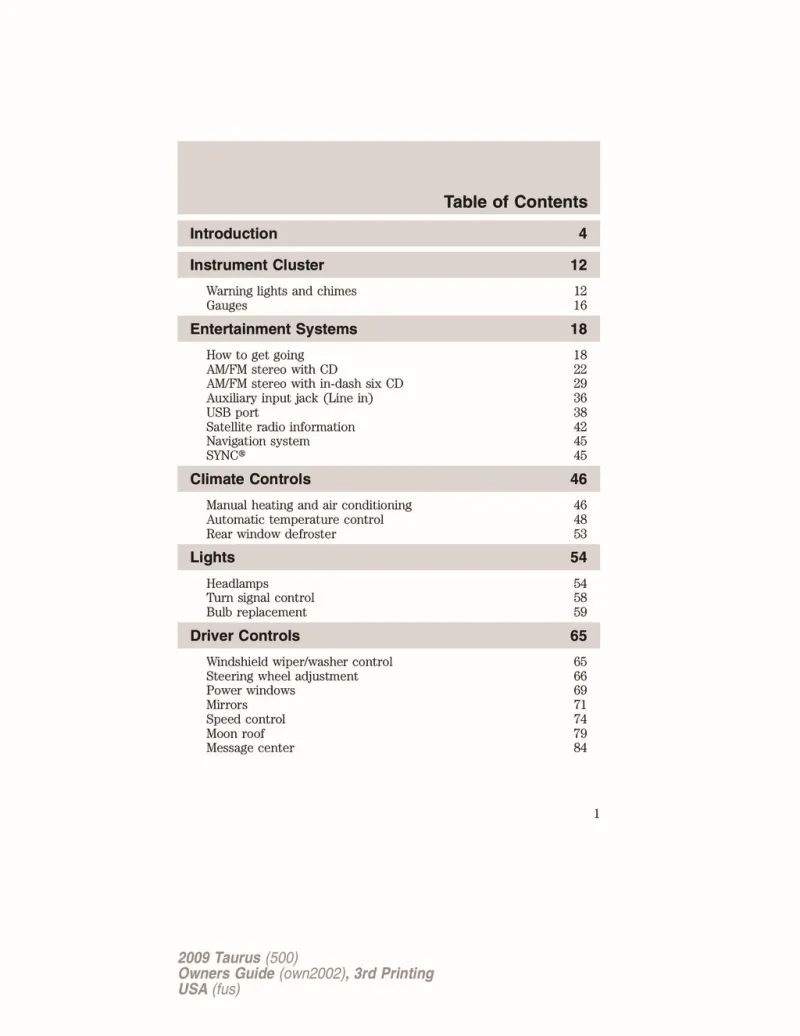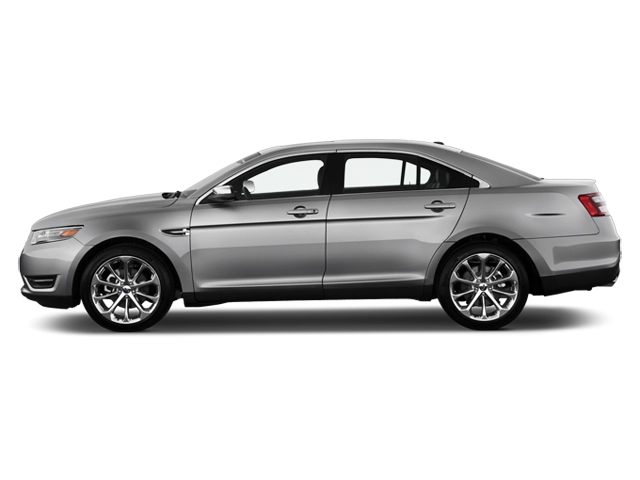2009 Ford Taurus Owner's Manual

Table of Contents
2009 Ford Taurus Overview
Introduction
The 2009 Ford Taurus stands as a testament to Ford's commitment to blending style, comfort, and innovation in the full-size sedan segment. With sleek lines and a refined design, the Taurus exudes an aura of sophistication while providing ample interior space and advanced features. Aimed at families and individuals seeking reliability and performance, the Taurus unites practicality with a modern touch.
Powertrains
The 2009 Taurus is offered with two powerful yet efficient powertrains. The standard 3.5-liter V6 engine generates a robust 263 horsepower, delivering smooth acceleration and responsive handling with a 6-speed automatic transmission. For those seeking enhanced performance, the Taurus SHO (Super High Output) variant is equipped with a 3.5-liter twin-turbocharged V6 engine, producing an impressive 365 horsepower. Both engines provide commendable fuel efficiency, ensuring that every drive remains both pleasant and economical.
Trims
The Taurus comes in several trims, allowing buyers to select the model that best fits their needs. The SE trim offers a solid array of standard features, including keyless entry, air conditioning, and cruise control. Moving up to the SEL trim adds luxurious touches such as leather upholstery and an upgraded sound system. For those who desire the premium experience, the Limited trim brings in additional comforts like heated front seats, power-adjustable pedals, and advanced technology options.
Features
The 2009 Ford Taurus is loaded with features designed to enhance both convenience and safety. Highlights include the integrated Ford SYNC system for seamless smartphone connectivity, available navigation system, and a premium audio system that ensures an enjoyable ride. Additionally, safety is paramount with features like anti-lock brakes, stability control, and multiple airbags to safeguard all occupants.
Owner's Manual
The owner's manual for the 2009 Ford Taurus serves as a comprehensive guide, detailing essential information on vehicle operation, maintenance schedules, and troubleshooting tips. It is an invaluable resource for new owners, ensuring they can maximize the performance and longevity of their Taurus while providing vital safety and care information.
User manual download
The Ford Taurus owner manual for the 2009 model year is to be found in PDF downloadable format on this page. The owner manual for the model year 2009 is free and in English, but the repair manuals are usually not easy to get and may cost more.
Manual Questions
Fill the form below and someone will help you!

